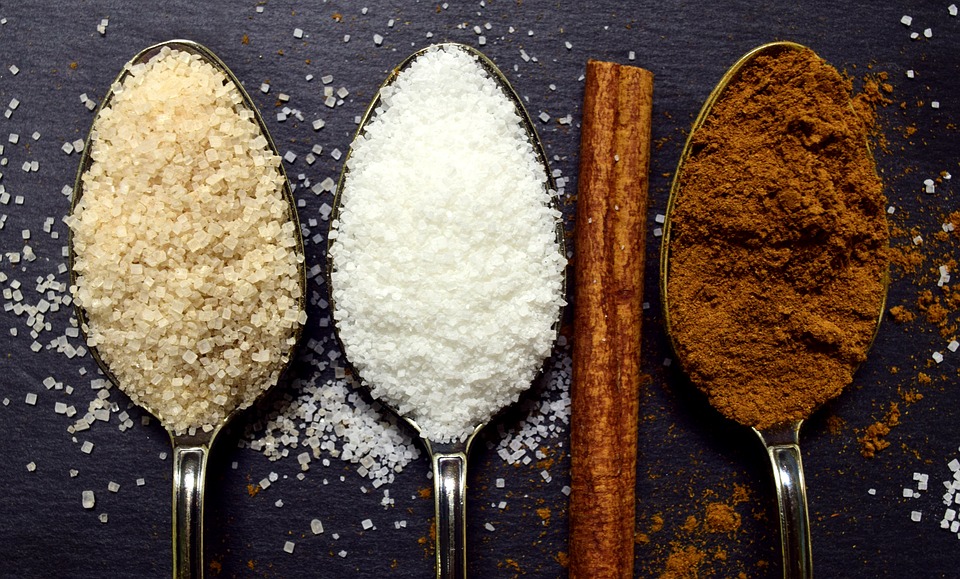Sugar is everywhere. It’s in our breakfast cereals, our soft drinks, our condiments, and even our salads. In fact, the average American consumes about 17 teaspoons of added sugar per day, which adds up to about 57 pounds per year! With such high levels of sugar intake, it’s no surprise that many people are curious about the effects of cutting out sugar. WisdomSpoon will explore today what happens when you stop eating sugar for two weeks.

Improved Insulin Sensitivity
When we consume sugar, our body releases insulin to help transport sugar from the bloodstream into cells. Over time, excess sugar intake can lead to insulin resistance, which can cause elevated blood sugar levels and a host of health issues. By reducing sugar intake, insulin sensitivity can improve, leading to better blood sugar control and overall health. This improved insulin sensitivity can lead to better energy levels, reduced inflammation, and a reduced risk of developing type 2 diabetes.
Weight Loss
Sugar is a high-calorie food that doesn’t provide much nutritional value. By cutting out sugar, we can reduce our calorie intake, leading to weight loss. Additionally, reducing sugar intake can help reduce inflammation in the body, which can contribute to weight gain and other health issues. In fact, studies have shown that reducing sugar intake can lead to significant weight loss and improved body composition.

Reduced Risk of Chronic Diseases
High sugar intake has been linked to a higher risk of chronic diseases such as type 2 diabetes, heart disease, and certain cancers. By reducing sugar intake, we can lower our risk of developing these conditions and improve overall health. In fact, a study published in the Journal of the American Medical Association found that individuals who consumed 17-21% of their daily calories from added sugar had a 38% higher risk of dying from heart disease compared to those who consumed 8% or less.
Improved Mood and Energy
Sugar can cause spikes and crashes in blood sugar levels, leading to fatigue and mood swings. By reducing sugar intake, we can stabilize blood sugar levels and improve mood and energy. In fact, a study published in the British Journal of Psychiatry found that individuals who consumed a diet high in sugar had a higher risk of developing depression and anxiety compared to those who consumed a diet low in sugar.

Better Skin Health
Sugar can cause inflammation in the body, which can lead to acne and other skin issues. By reducing sugar intake, we can improve skin health and reduce the risk of breakouts. In fact, a study published in the Journal of the Academy of Nutrition and Dietetics found that reducing sugar intake can lead to improved skin health and a reduction in acne.
The Real Challenge: How to Cut Out Sugar
Cutting out sugar can be challenging, especially if you’re used to consuming a lot of sugar in your diet. Here are some tips to help you reduce your sugar intake:
Step 1: Clean out your pantry
The first step in cutting sugar from your diet is to clean out your pantry. Remove all the packaged foods that contain sugar and replace them with healthier options. Stock up on fresh fruits, vegetables, lean protein, and whole grains. This will help you avoid the temptation of eating sugary snacks and will provide your body with the nutrients it needs.
Step 2: Plan your meals
Planning your meals is essential when cutting sugar from your diet. Plan your meals for the week ahead and make sure that they are packed with healthy, nutritious foods. This will help you avoid the temptation of grabbing sugary snacks when you’re hungry. You can also prepare healthy snacks like fruit and nut mix or vegetable sticks with hummus to help you resist the temptation of eating sugary snacks.
Step 3: Read food labels
Reading food labels is crucial when cutting sugar from your diet. Many packaged foods contain hidden sugars, which can be detrimental to your health. Look for foods that are low in sugar and avoid foods that contain added sugars like high fructose corn syrup or sucrose. Choose foods that are high in fiber and protein to help you stay full and satisfied.

Step 4: Choose whole foods
Whole foods such as fruits, vegetables, whole grains, and lean protein sources are naturally low in sugar and provide a wide range of health benefits.
Step 5: Swap sugary drinks for water
Soft drinks, energy drinks, and fruit juices are all high in sugar. Swap them for water or herbal tea instead. Drink water Drinking water is essential when cutting sugar from your diet. Many people mistake thirst for hunger and end up eating sugary snacks when they’re actually dehydrated. Aim to drink at least 8 glasses of water a day to stay hydrated and to help flush toxins out of your body. You can also try drinking herbal tea or infused water to add flavor to your drinks.
Step 6: Find healthy substitutes
Finding healthy substitutes for sugary snacks is crucial when cutting sugar from your diet. You can replace sugary snacks with healthy alternatives like fruit, nuts, seeds, and yogurt. You can also add natural sweeteners like honey, maple syrup, or stevia to your food to add sweetness without the harmful effects of sugar.

Cutting sugar from your diet for two weeks may be challenging, but it’s a worthwhile step to take if you want to maintain your health and well-being. With a little planning and commitment, you can cut sugar from your diet and reap the benefits of a healthier lifestyle.
Remember, taking a break from sugar can be a great way to jumpstart a healthier lifestyle and re-evaluate your relationship with food. By becoming more mindful of what you eat and learning to enjoy the natural flavors of whole foods, you may find that you don’t miss sugar as much as you thought you would.

